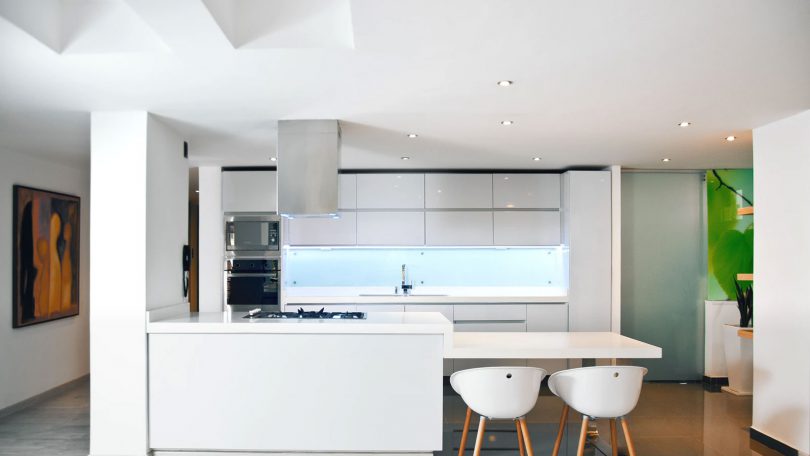Pro: Storage
The number one advantage to floor-to-ceiling cabinets takes us back to the fundamentals of kitchen design basics: the amount of storage space they offer. Costco shopper who buys huge family packs of pasta and Jell-O that could last a year? Store those up on the top cabinets. But if you also buy heavier items like canned goods, it’s best to store them lower down. Keep the top shelves full but also light. If you’re extending your cabinets all the way to the ceiling, you may need a ladder to reach the uppermost shelves, and you want to ensure that those items weigh less so you can keep your hands free for holding onto the ladder.
Pro: Less clutter
Along with improvements in storage afforded by the floor-to-ceiling cabinet comes the enormous advantage of less clutter. In the kitchen, it can sometimes be challenging to determine what exactly will pile up without actually using it, so you may want to decide how to organize your kitchen cabinet shelves on an evolving basis – that is, after living for a while with the floor-to-ceiling shelves. If you’re a cook who frequently consults recipes from cookbooks, you may want to set up a little bookshelf at eye level for quick access.
Pro: Eliminate the gap between the cabinets and the ceiling
In kitchen designs that don’t have the cabinets extending to the full height of the ceiling, there is a “dead space” that can be unsightly and accumulate dust. If it’s big enough, it’s possible to use it for storage or to display decor. For smaller gaps, it’s always possible to get that clean, finished look by applying crown molding. Whatever you decide to do will depend on the dimensions of your kitchen and the kitchen cabinet height you choose.
Con: Reaching up to the Top Shelves
The drawback to having floor-to-ceiling cabinets is that, unless you have very low ceilings or are extremely tall, you’re probably going to have to use a stepladder in order to access the highest shelves. Fortunately, a basic step ladder is easy to fold up and store tucked up next to the refrigerator or in a utility closet, and they’re handy to have around for minor upkeep and repairs.
Con: Making the kitchen feel cramped
If you have a smaller-sized kitchen that already feels a crowded, floor-to-ceiling kitchen cabinetry might just make it feel even smaller. In this case, keeping a little area open between the cabinets and the ceiling might be one of the best ways to add a little sense of spaciousness to your kitchen, providing something of an open concept kitchen design. If the area is large enough, you can actually use them for visible storage of items you’d like to showcase such as jars, cookware, or baskets. If there is enough natural sunlight, this could also be an area where you keep some plants. Having items in this space will add depth to the visual impression given by your kitchen and draw the eye upwards, giving an overall more spacious feel to a smaller-sized kitchen.







